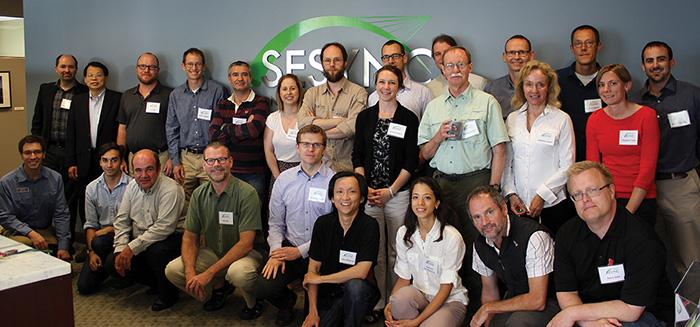
A geographer, ecologist, anthropologist, and economist walk into a research center …
No, it’s not the beginning of a bad joke, but the beginning of a very productive workshop that convened recently at the National Socio-Environmental Synthesis Center (SESYNC). Earlier this month, co-organizers Dr. Jasper van Vliet of the VU University of Amsterdam, Dr. Erle Ellis of the University of Maryland Baltimore County, and Dr. Nicholas Magliocca of the University of Maryland Baltimore County led scholars, from an array of disciplines and institutions, through an examination of land-use change. (Land-use change is broadly understood as how humans use land—to fulfill, for example, our demands for food, forest products, and energy—and how those uses change land cover, including beaches, agricultural lands, and urban environments.) Specifically, the group was interested in finding patterns among and cultivating shared perspectives on the causes and consequences of land-use change on a global scale.
Although geographers, ecologists, anthropologists, and economists have most certainly researched and synthesized data related to land-use change before, the workshop participants hadn’t all done so together. Scholars from these disciplines have their own journals; their own conferences; their own ways of thinking about problems and approaching solutions. This SESYNC workshop offered these researchers—who, in most cases, had never before worked with one another—an opportunity to sit at the same table to formulate shared understandings of the drivers and outcomes of land-use change.
The workshop’s principal focus was to determine next steps within a larger research effort of the Global Land Project on globalized understandings of land changes. One theme that emerged was the importance of disseminating research results to communities that make decisions about and are impacted by changes in land use, especially policy makers. “Co-designing” the team’s research agenda—i.e., planning research objectives and approaches together with stakeholders who would use the knowledge generated—will help close the gap between what scientists do and what information policy makers need.
By integrating new perspectives, this workshop is driving the team’s work forward in novel and exciting ways. According to Dr. Ellis, the experience “open[ed] the door on broadening the thinking about how land changes and how we can synthesize our knowledge about that. And that, of course, is a little bit scary. You get out of your comfort zone—what is it that we aren’t really sure about? That’s the cutting edge. And we’re definitely there.”